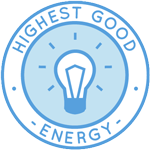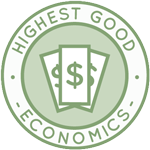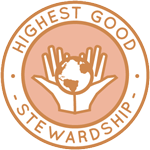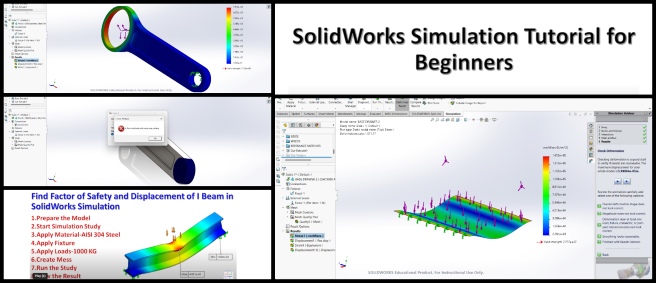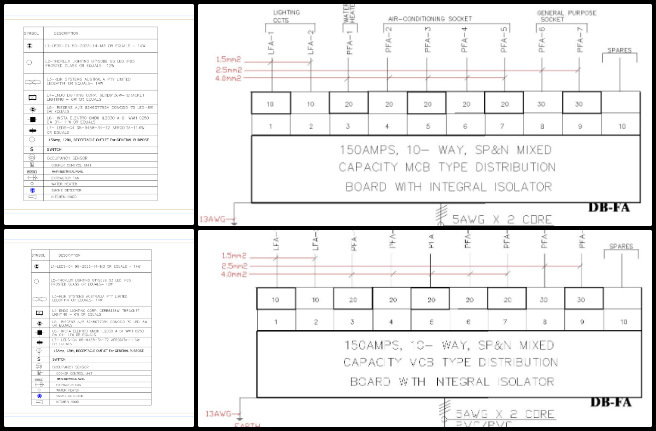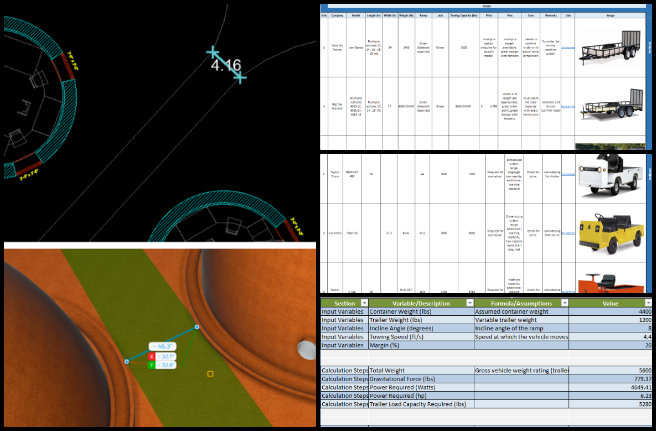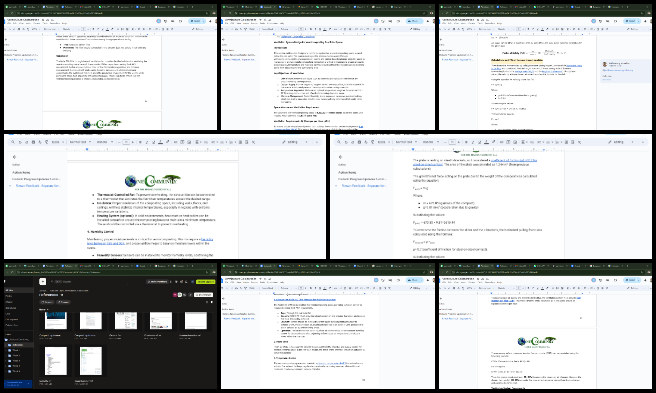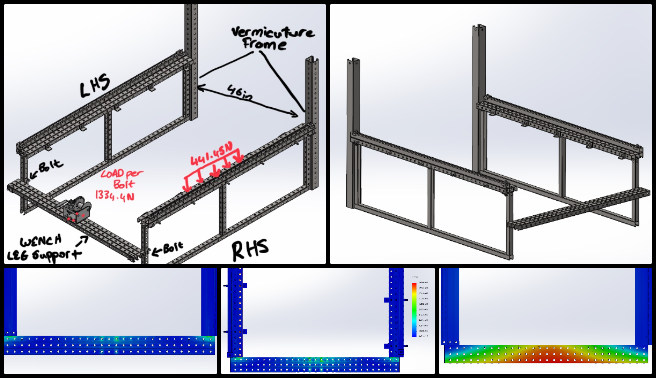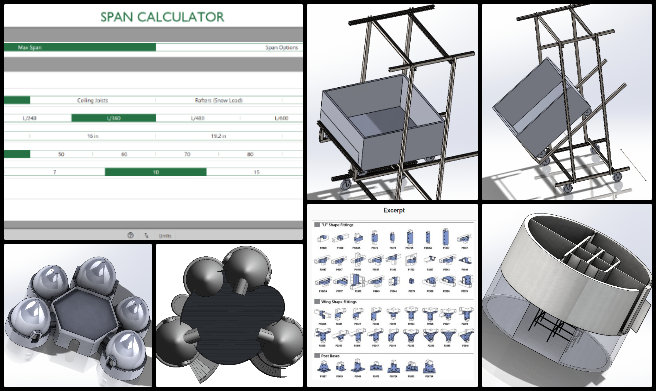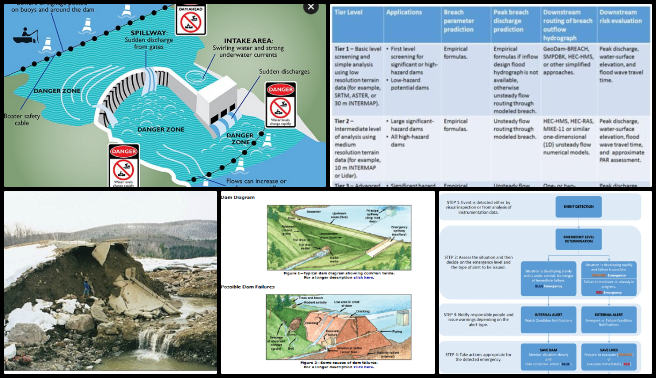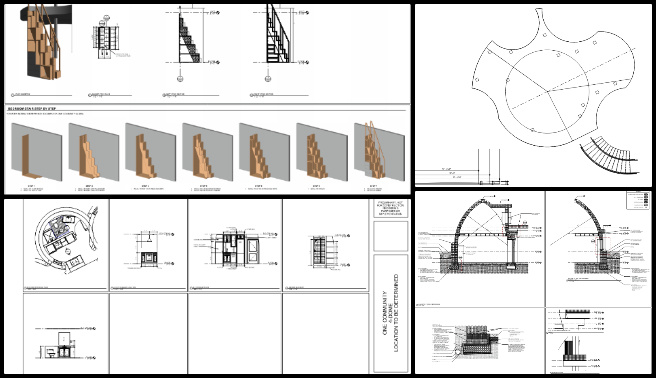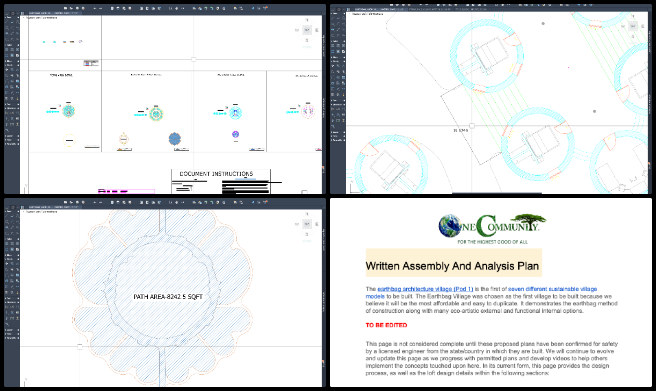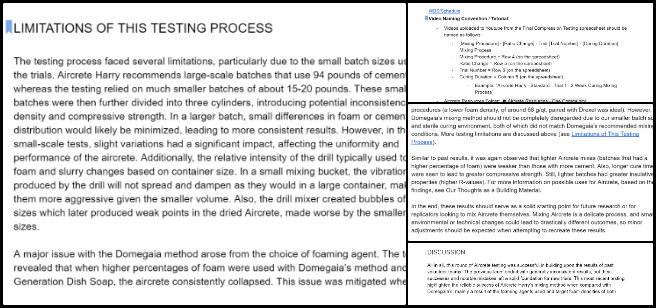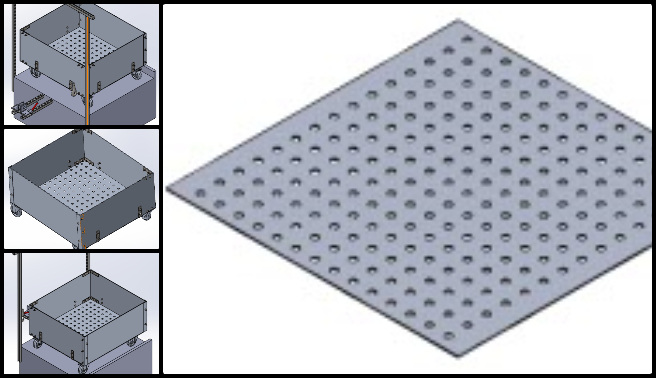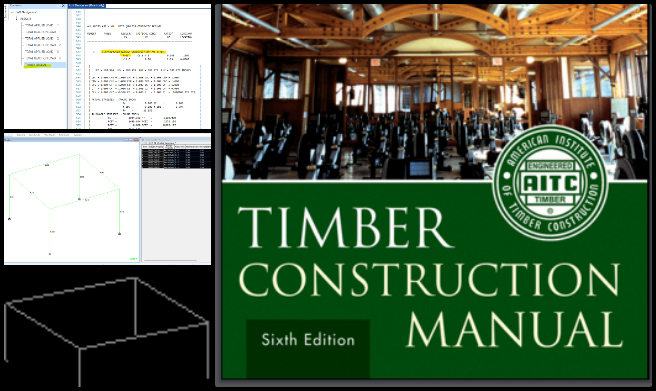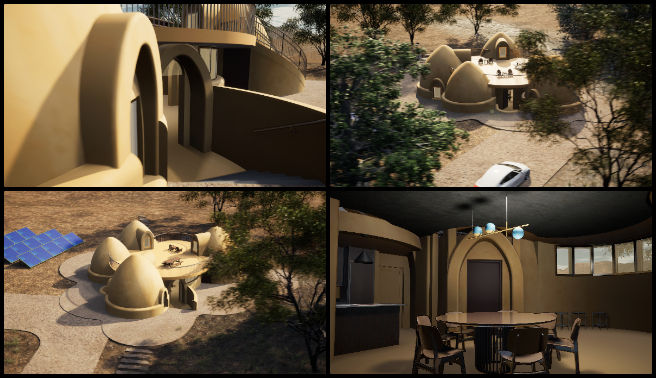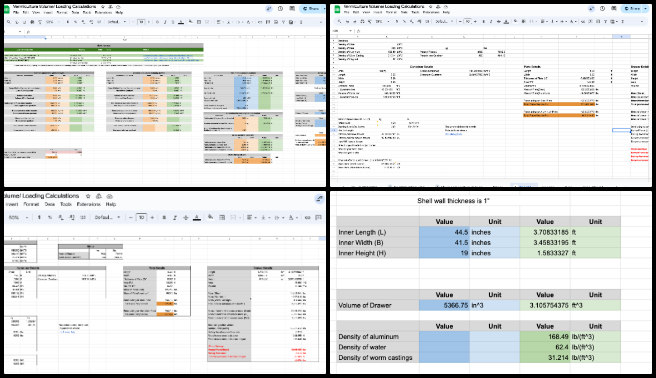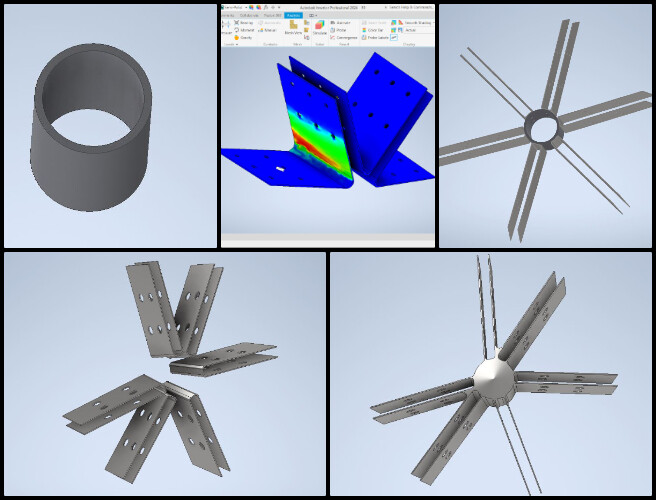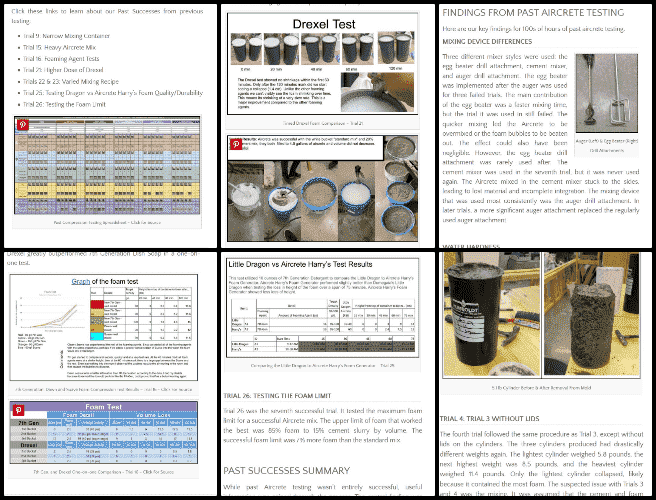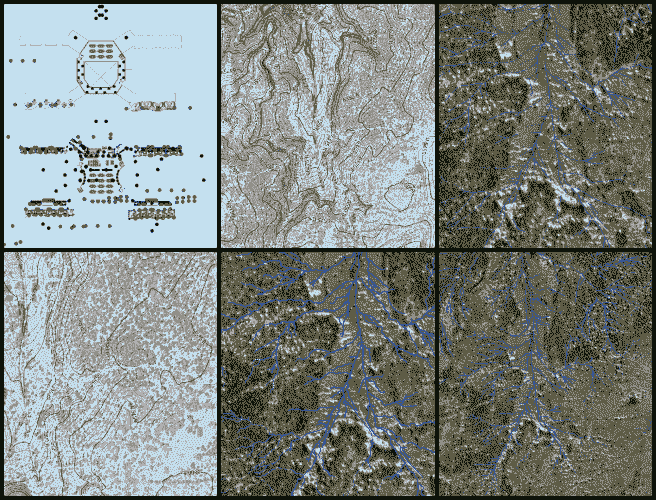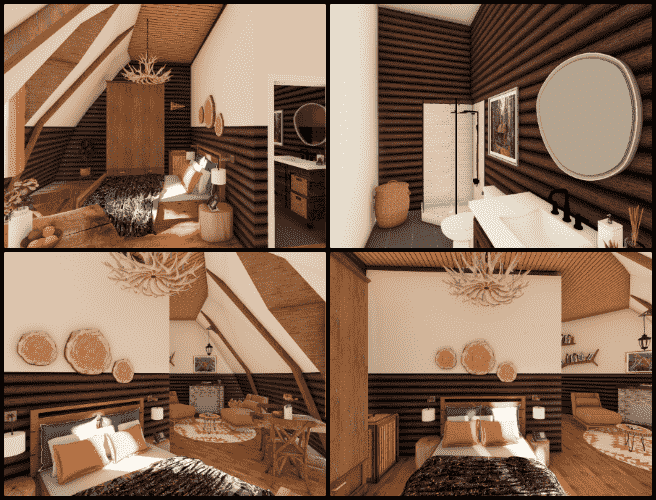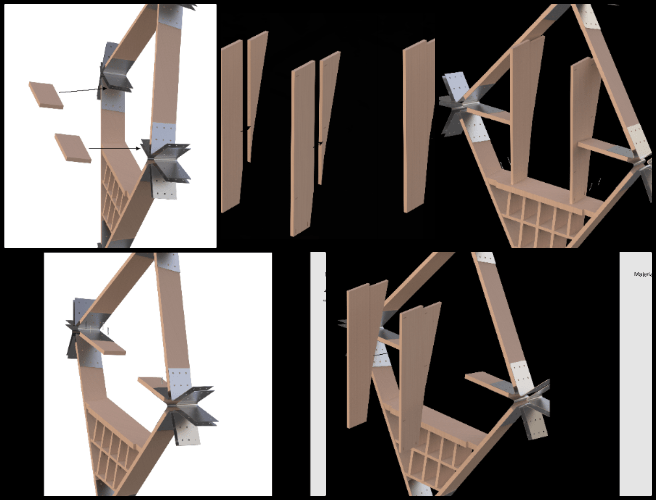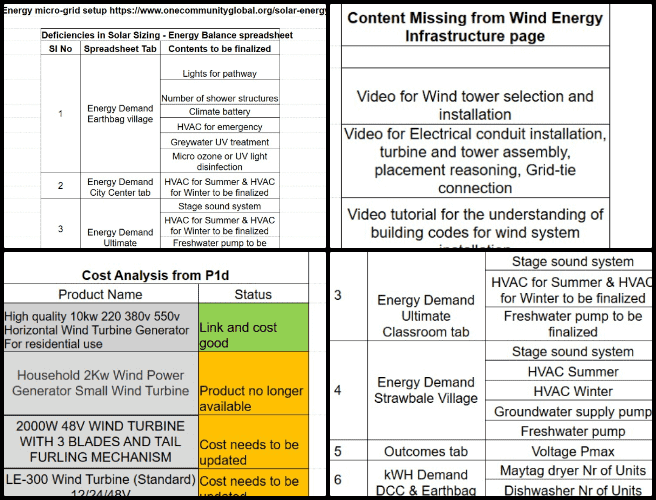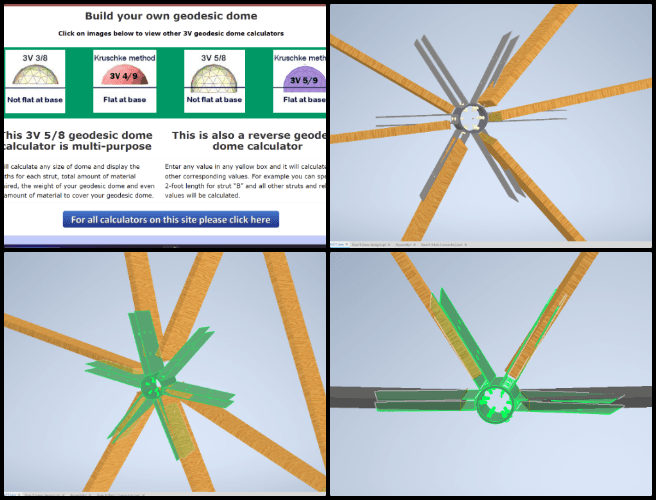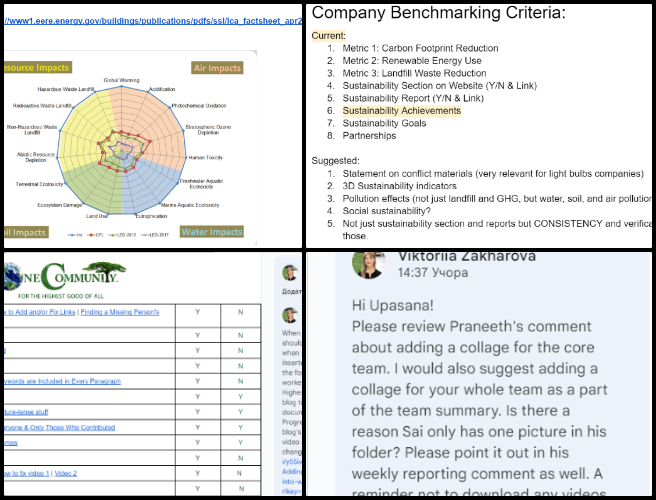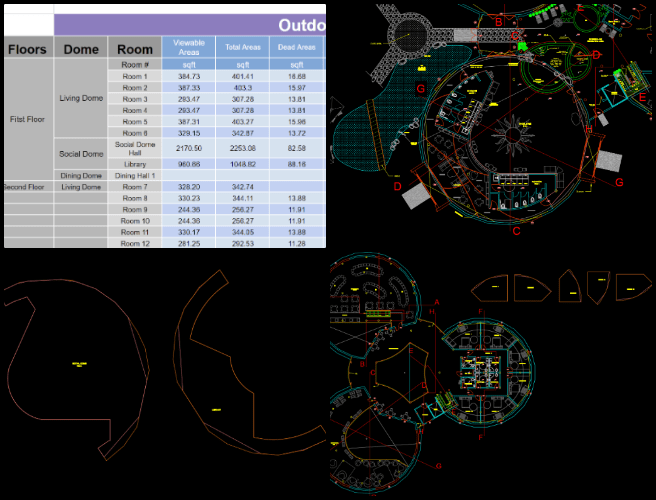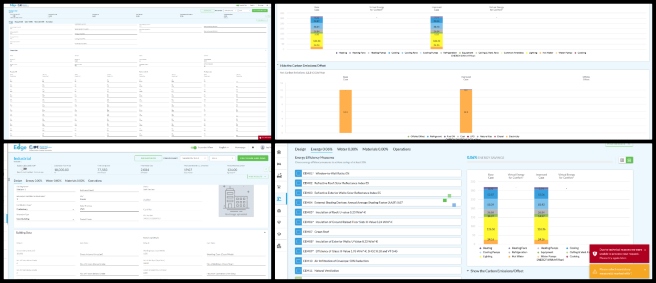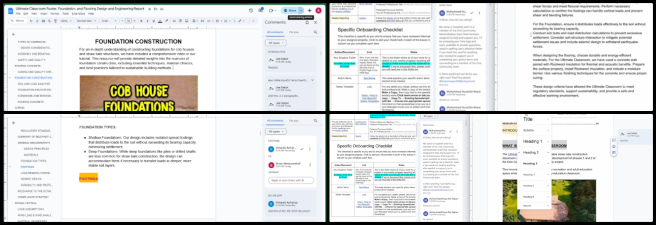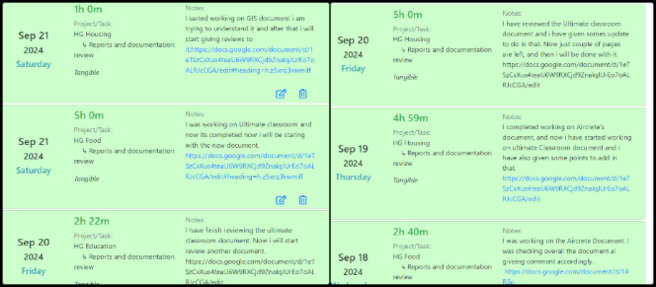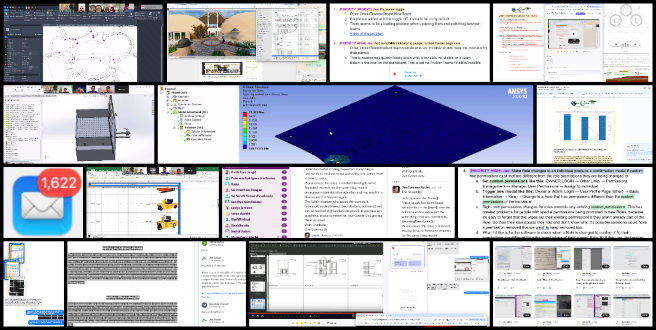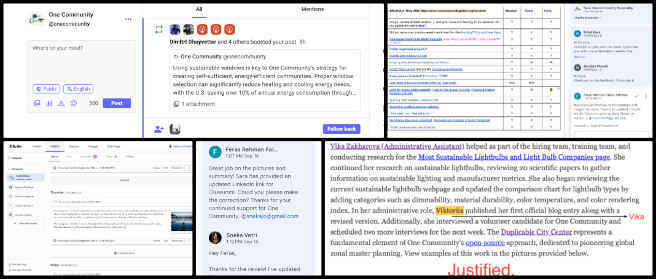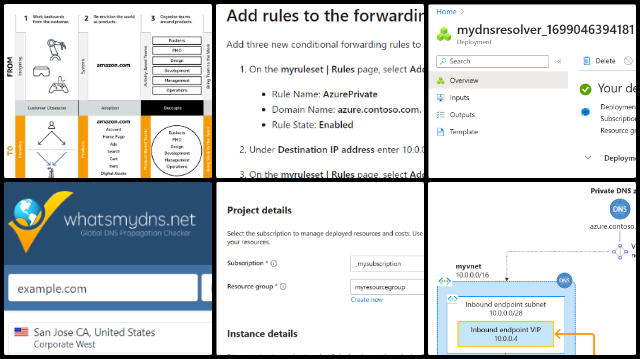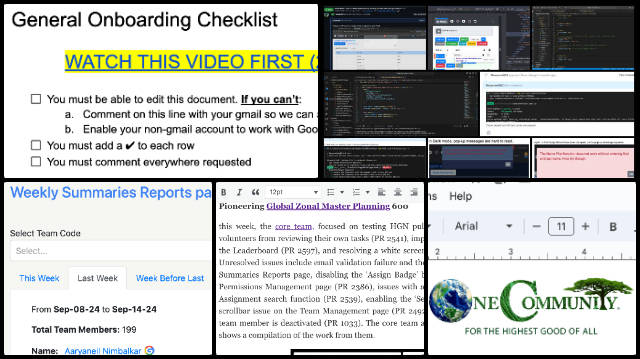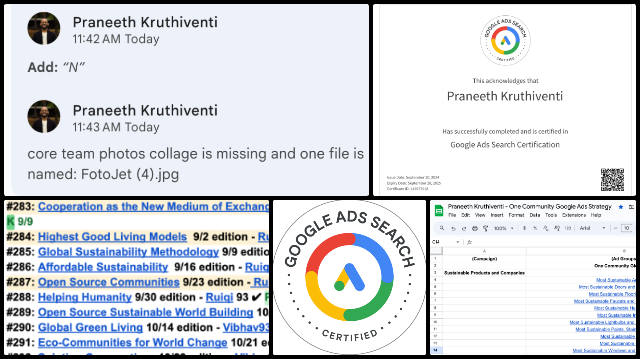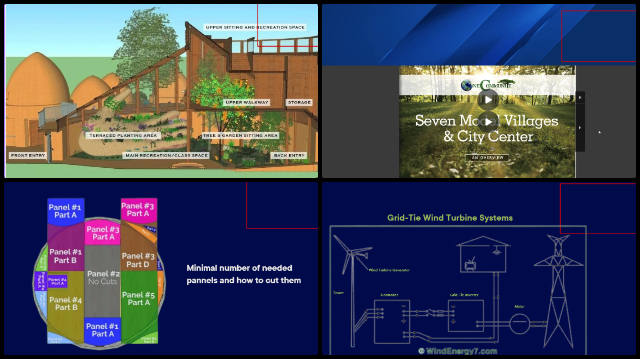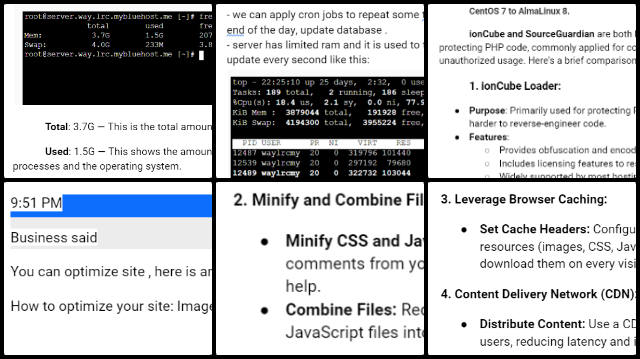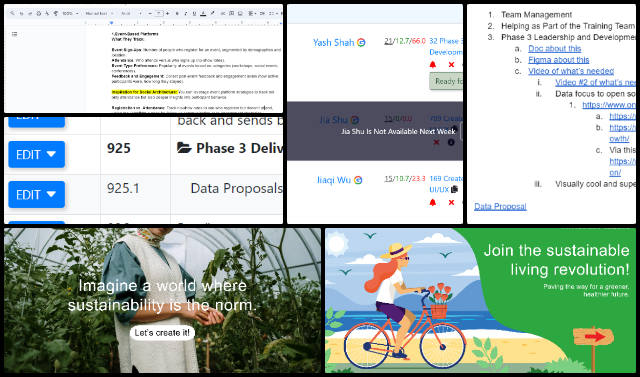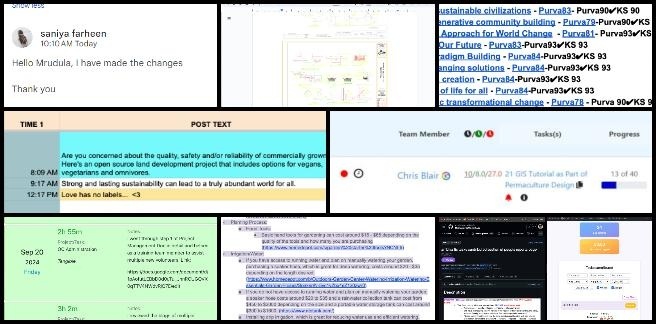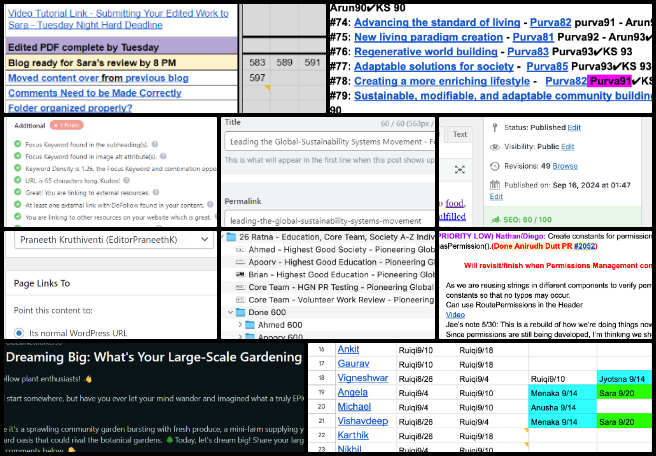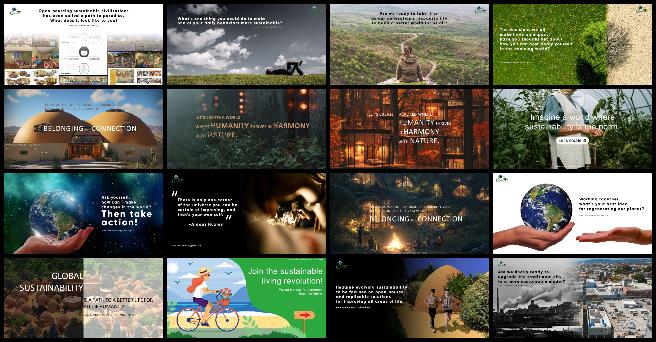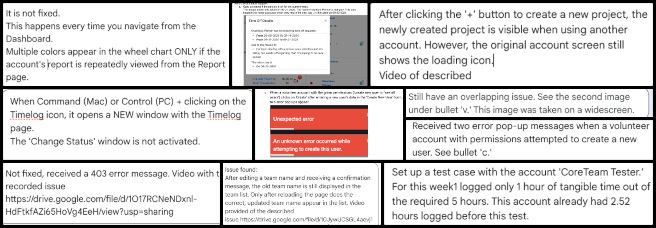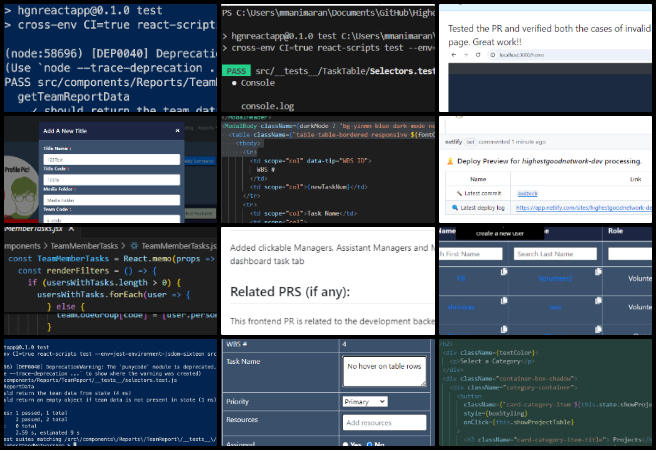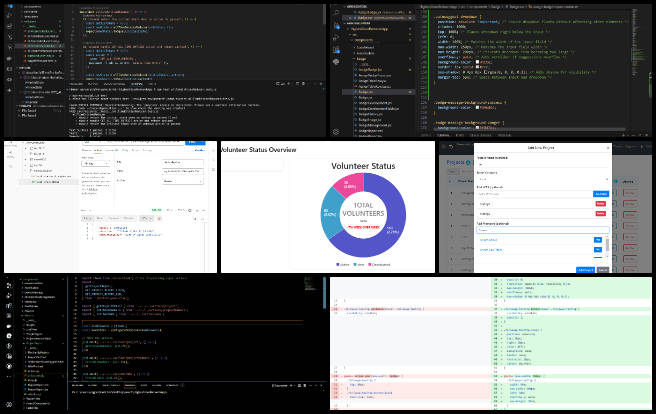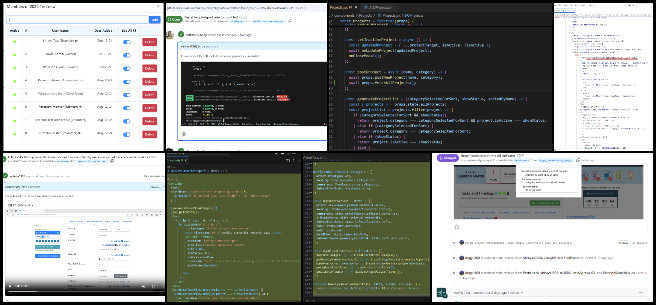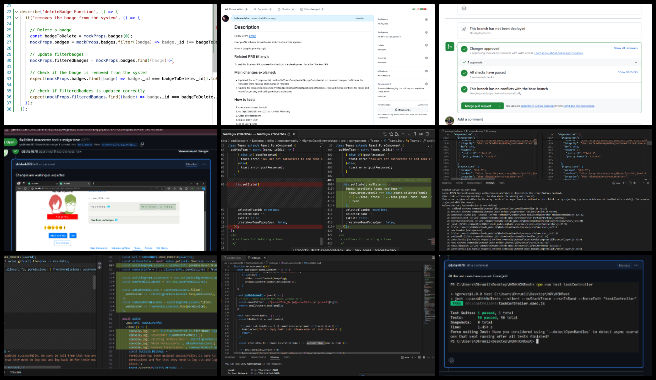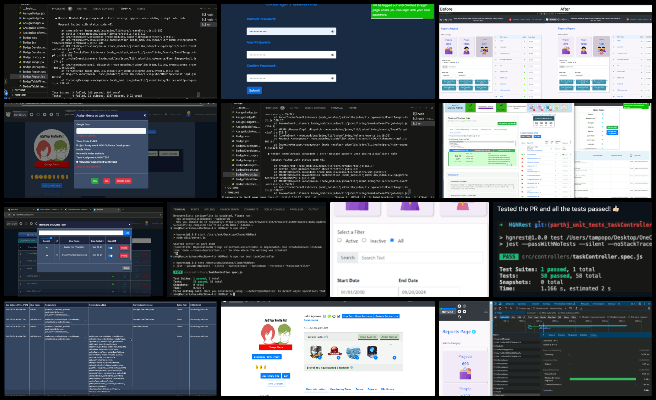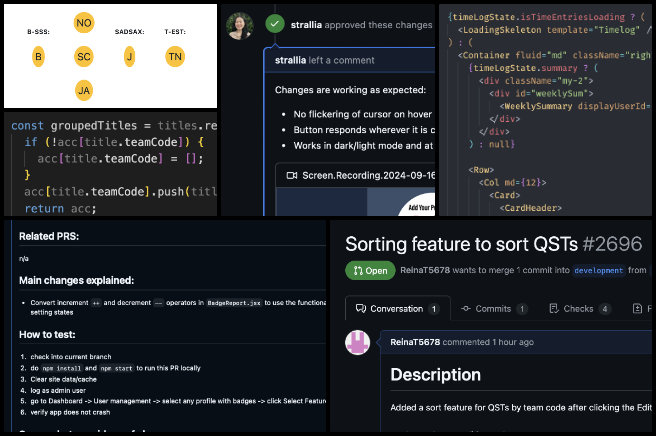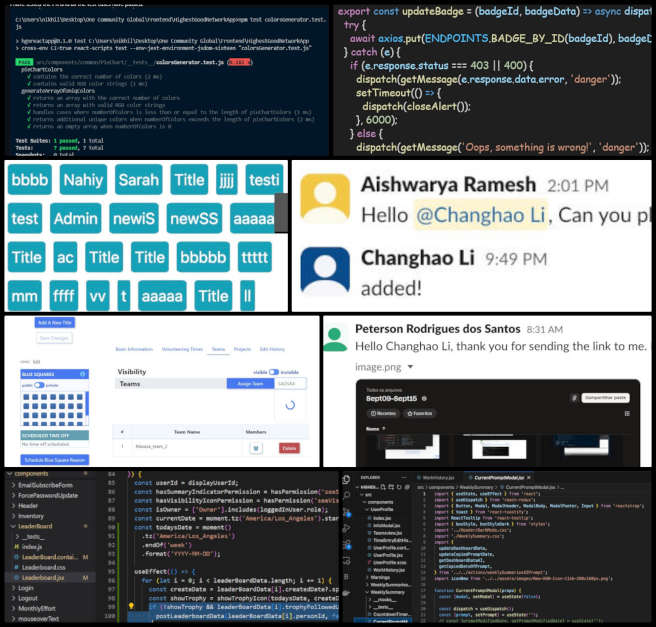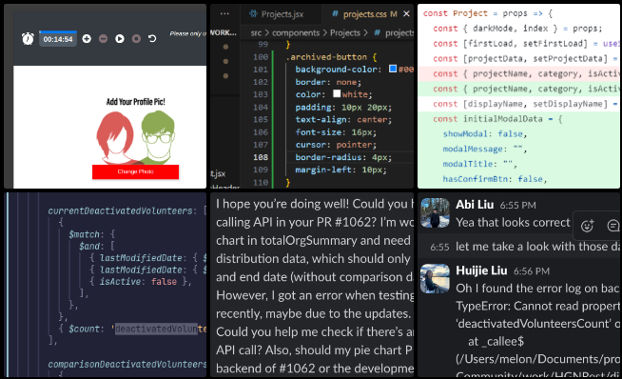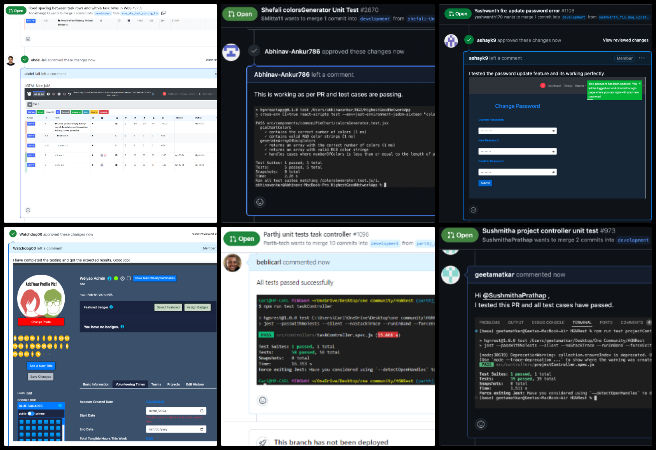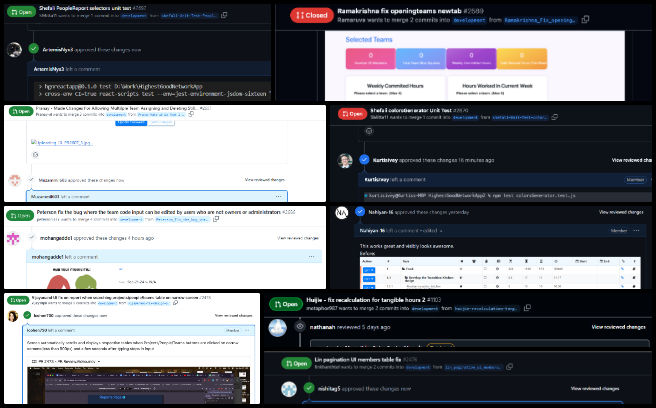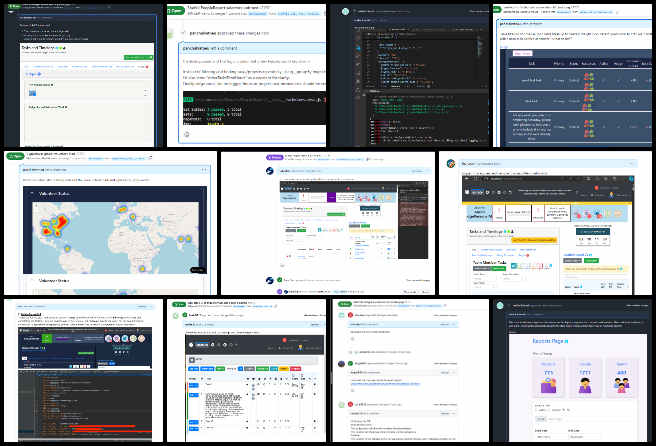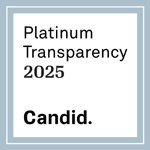Tending the Human Garden – One Community Weekly Progress Update #601
At One Community, we are tending the human garden by evolving sustainability in ways that regenerate our planet and create a world that works for everyone. Through sustainable approaches to food, energy, housing, education, economics, and social architecture, we are building a self-replicating model designed to spark global collaboration. Our all-volunteer team is committed to open sourcing and free sharing the complete process for “The Highest Good of All.” Together, we are cultivating teacher/demonstration hubs to inspire global stewardship practices and fulfilled living for generations to come.
- Here’s our project overview
- Here’s our world-change methodology
- Here’s how this becomes self-replicating
- Here’s how we are open source and free-sharing all the do-it-yourself designs
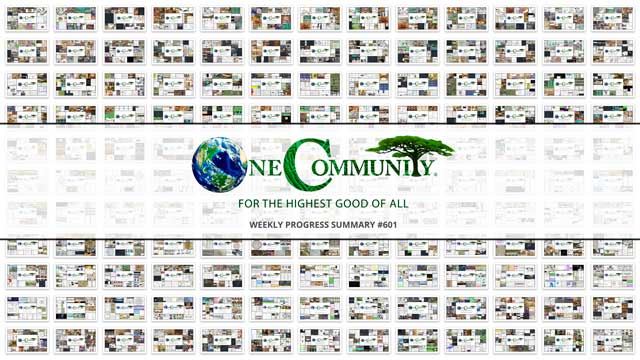
OUR MAIN OPEN SOURCE HUBS
Click on each icon to be taken to the corresponding Highest Good hub page.
One Community’s physical location will forward this movement as the first of many self-replicating teacher/demonstration communities, villages, and cities to be built around the world. This is the September 23rd, 2024 edition (#601) of our weekly progress update detailing our team’s development and accomplishments:
Tending the Human Garden
One Community Progress Update #601
DONATE | COLLABORATE | HELP WITH LARGE-SCALE FUNDING
CLICK HERE IF YOU’D LIKE TO RECEIVE AN EMAIL EACH WEEK WHEN WE RELEASE A NEW UPDATE
YOU CAN ALSO JOIN US THROUGH SOCIAL MEDIA
ONE COMMUNITY WEEKLY UPDATE DETAILS
HIGHEST GOOD HOUSING PROGRESS
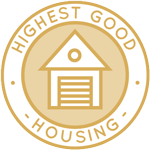 One Community is tending the human garden through Highest Good housing that is artistic and beautiful, more affordable, more space efficient, lasts longer, DIY buildable, and constructed with healthy and sustainable materials:
One Community is tending the human garden through Highest Good housing that is artistic and beautiful, more affordable, more space efficient, lasts longer, DIY buildable, and constructed with healthy and sustainable materials:
- Learn about: Our Upcoming Crowdfunding Campaign
- Learn about the different village models: 7 Sustainable Village Models
- Visit the open source portals for the first two: Earthbag Village OS Hub | Straw Bale Village OS Hub
This week, Hayley Rosario (Sustainability Research Assistant) focused on the Earthbag Village project designs, beginning with a review of the AutoCAD drawing to assess its current design elements. She then proceeded to create a mock-up using SOLIDWORKS Simulator, which involved integrating the key design features into the software for further simulation. In order to enhance her understanding of the simulator’s capabilities, Hayley watched tutorials covering basic simulation techniques and combinations. These tutorials provided her with additional insights into the simulation process, helping to refine her approach. The Earthbag Village is the first of 7 to be built as the housing component of One Community’s open source model for tending the human garden. See some of her work in the collage below.
Adefola (Fola) Madehin (Electrical Design Specialist) continued his work with Earthbag Village electrical designs. Fola completed the socket and panel layout for the Earthbag Village, with receptacles placed in the bedrooms and living room, and the distribution panel installed in the living room. He also finished the lighting circuit lettering and selection, as well as the socket ring circuit lettering and selection, for the Earthbag Village 4 Dome project. Additionally, he completed the schematic diagram for the distribution panel, adhering to the National Electrical Code (NEC), and worked on the schematic diagram for the distribution panel using the American standard of single-phase voltage. The Earthbag Village is the first of 7 to be built as the housing component of One Community’s open source model for tending the human garden. See some of his work in the collage below.
Adil Zulfiquar (Engineer) continued working on the Vermiculture Toilet designs. This week, Adil created an Excel workbook to outline the minimum requirements for both the electric utility vehicle (EUV) and trailer based on input variables, with additional columns added to list pros, cons, and remarks for the trailer, arranged by preference. A review of the master AutoCAD file for the Earthbag Village was completed and compared with the related SketchUp file to identify dimensional variations and understand their causes. The EUV calculation for total horsepower was updated to reflect the adjusted GVWR from the trailer, and three columns for pros, cons, and remarks were added to assist in vehicle selection. Additionally, the forces required to load a container onto a trailer, both for pulling and pushing up the ramp, were calculated to assess the need for an external device in the loading process. This model aims to offer sustainable solutions that not only address waste processing but also enhance living standards by tending the human garden. See below for some of the pictures related to this work.
Anil Karathra (Mechanical Engineer) continued working on the Vermiculture Toilet designs. Anil focused on researching the most recent vermicomposting systems and techniques, with particular attention given to the configuration of the eco-toilet’s drawer system. In addition to research, participation in the weekly team meeting included creating an action item list to guide upcoming tasks. Time was spent revising and correcting past documentation related to the project, alongside the initiation of research on the eco-toilet’s ventilation system. Further research explored how to integrate ventilation and temperature control mechanisms into the eco-toilet, focusing on identifying the necessary components. Detailed documentation was also produced, covering the temperature control and ventilation needs for the vermiculture space. The approach of tending the human garden enables the development of innovative solutions that are both environmentally friendly and effective. See below for some of the pictures related to this work.
Joseph Osayande (Mechanical Engineer) continued helping finish the Vermiculture Toilet engineering and design details. Joseph focused on refining the FEA analysis to evaluate stress and strain in key areas where forces are anticipated, ensuring that the unistruts could withstand the load. A report was prepared to present the results and additional observations. Step-by-step instructions were created for performing the analysis in both SolidWorks and ANSYS Mechanical, aimed at facilitating further testing on a more powerful computing system. The mesh was described in detail, along with the methods that would yield accurate results, and a mesh study was outlined for better analysis. This model aims to offer sustainable solutions that not only address waste processing but also enhance living standards by tending the human garden. See below for some of the pictures related to this work.
Karthik Pillai (Mechanical Engineer) also continued helping finish the Vermiculture Toilet engineering and design details. Karthik focused on advancing the vermiculture toilet project by developing a more simplified waste disposal design. During a team meeting, various ideas were discussed, and the feedback gathered will be used to adjust the design in the coming weeks. He also made structural changes, replacing the existing framework with unistruts to improve the overall system’s stability and efficiency, and shared a reference assembly with Yagyansh to aid in the process. On the four-dome cluster roof project, Karthik engaged in a detailed team meeting where they explored the next steps and outlined a strategy to complete the project within the upcoming weeks. The Earthbag Village is the first of 7 to be built as the housing component of One Community’s open source model for tending the human garden. See some of his work in the collage below.
Loza Ayehutsega (Civil Engineer/Assistant Civil Engineer) completed another week working on the Earth Dam risk assessment and dam break hazard assessment. Loza worked on reviewing the comments on the report. The embankment, slope, and auxiliary spillway failures were reported with images in addition to responding to Emergency Conditions at Dams, which were reviewed from the literature and are planned to be added to the report for the coming weeks. Emergency conditions at dams refer to situations that pose a significant risk of failure or potential disasters, necessitating preplanned actions to protect lives and property.</light> Emergency Action Plans (EAPs) are crucial tools that outline these conditions and specify the necessary responses to mitigate the associated risk. Ensuring dam safety measures and preparedness are a foundation of One Community’s open source earthworks as part of tending the human garden. See the pictures below for examples related to her work.
Michaela Silva (Architect) continued her work on finalizing the interior of the Earthbag Village 4-dome single-family home design. Michaela worked on the construction documents, planning the remaining documents and held discussions with Jae. Michaela added the appliance schedule to the documents. During the roof deck team meeting, she addressed the design layout and the construction of the structural frame. She began to incorporate this information into the Revit model. The Earthbag village is the first of 7 villages to be built as part of One Community’s open source model for tending the human garden. See her work in the collage below.
Prarthana Jathar (Architectural Designer) began helping also with the interior of the Earthbag Village 4-dome single-family home design. Prarthana created her profile and completed the initial setup for her project. She drafted the outline for the 4-dome cluster roof assembly and analysis, revised the report outline based on provided instructions, and attended a team meeting to discuss the action plan. She also researched blocks for internal views and assisted Chris with dimensions, streamlining village plans and title blocks, and conducting area calculations. The Earthbag Village is the first of 7 to be built as the housing component of One Community’s open source model for tending the human garden. See some of his work in the collage below.
Tad Matlock (Environmental Science Student) finished his work on the Aircrete Compression Testing content for updating the Aircrete webpage. He resolved the final comments left on the official document, adding commentary to the compression testing results, refining some of his previous writing, and making necessary fixes to the page’s formatting. Then, he performed a final review of the page in its entirety. These aircrete tests contribute to the housing aspect of One Community’s open source model for tending the human garden. See below for some of the images related to his work.
Yagyansh Maheshwari (Mechanical Engineer) continued helping finish the Vermiculture Toilet engineering and design details. Yagyansh worked on creating a list of finite element analysis (FEA) tasks for the drawer and performed FEA on it. He focused on designing methods for efficiently dumping compost on the ground, modifying the drawer by adjusting its size to a square shape and updating its materials in SolidWorks. Additionally, Yagyansh moved the wheel assembly inward to better fit the new disposal method and explored options for transferring the drawer to the dumping site while ensuring it could handle the necessary weight capacity. The Earthbag Village is the first of 7 to be built as the housing component of One Community’s open source model for tending the human garden. See some of his work in the collage below.
Yusuf Thanawala (Structural Engineer) continued helping finish the Vermiculture Toilet engineering and design details. Yusuf re-analyzed the 4-Dome Common Deck structure using STAAD.Pro. He implemented member releases and diaphragm commands to enhance the model’s lateral rigidity and revised the load cases for analysis, accounting for dead, live, snow, wind, and earthquake forces. So far, the structure passed the static load cases for dead and live loads, addressing vertical forces only. The Earthbag Village is the first of 7 to be built as the housing component of One Community’s open source model for tending the human garden. See some of his work in the collage below.
Yuxing Xu (VFX Artist) continued working on making videos for the Earthbag Village 4-dome home design. Yuxing focused on the 4-dome flyover and walkthrough video. He designed the exterior flyover camera path and rendered multiple videos for comparison. He worked on the interior environment, set the lighting for the scene, and arranged the layout for interior furniture, which he placed in Blender before exporting to Unreal Engine. Additionally, Yuxing worked on the grass and foliage for the scene and made adjustments to the trees. The Earthbag Village is the first of 7 to be built as the housing component of One Community’s open source model for tending the human garden. See some of his work in the collage below.
Yuze Tang (Architect) started working on Vermiculture Toilet designs. Yuze’s tasks included familiarizing himself with his teammates’ workflow processes, reporting the employment status of a volunteer, and reviewing spreadsheet calculations. Additionally, he focused on improving the presentation of the tables within the spreadsheet to enhance clarity and readability. The approach of tending the human garden enables the development of innovative solutions that are both environmentally friendly and effective. See below for some of the pictures related to this work.
DUPLICABLE CITY CENTER PROGRESS
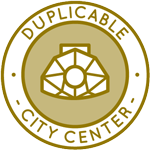 One Community is tending the human garden through a Duplicable and Sustainable City Center that is LEED Platinum certified/Sustainable, can feed 200 people at a time, provide laundry for over 300 people, is beautiful, spacious, and saves resources, money, and space:
One Community is tending the human garden through a Duplicable and Sustainable City Center that is LEED Platinum certified/Sustainable, can feed 200 people at a time, provide laundry for over 300 people, is beautiful, spacious, and saves resources, money, and space:
- Learn about this building and it’s function in tending the human garden: Duplicable City Center Open Source Hub
This week, the core team continued their research on the Highest Good Energy. They added and organized items in the Highest Good Energy Tools, Equipment, Materials/Supplies list, wrote individual descriptions, and attached relevant photos. Additional work included reviewing other categories regarding the items included in those lists. One Community’s open-source initiative for tending the human garden includes the Duplicable City Center as a central component. See the images of this work below.
Arnob Mutsuddi (Mechanical Engineer) continued working on Duplicable City Center structural engineering model and details. His work focus was on editing the new connector design (row 2) to align the angles with the dome structure. A new approach was initiated for the design, with specific attention given to the side struts of the connector. A fillet was added to the corner to help distribute stress more effectively. The design of the V-shaped connector was also analyzed. Additionally, the alignment of the ring with the side struts of row 2 of the dome was addressed. A team meeting took place to discuss the workflow of the design process. The Duplicable City Center is a foundational part of One Community’s open-source model, which excels in tending the human garden. This approach is integral to their mission of tending the human garden through innovative and scalable solutions. See some of this work in the pictures below.
Charles Gooley (Web Designer) continued working on the Transition Food Self-sufficiency Plan. He migrated additional tools and equipment from the Highest Good Food Tools, Equipment, Materials/Supplies design document and the Earthbag Construction Dome-Home Electrical Systems pages to the Tools and Equipment for Open Source Construction master page, ensuring that the links display correctly in the address bar when clicked. The task included resizing images and copying text from the design document, with some duplicate entries excluded. Work then shifted to moving content from the Google document to the Aircrete Engineering and Research: Compression Testing, Mix Ratios, R-value, and More page. The Duplicable City Center is a foundational part of One Community’s open-source model for tending the human garden. Take a look at some of this work in the images below.
Chris Blair (GIS Technician/Horticulturist) continued working with GIS data as part of One Community’s Permaculture Design that includes the location of the Duplicable City Center. He continued learning how to use QGIS, an open-source GIS software, with the goal of recreating his previous work from proprietary software to improve future access to the data. Chris experimented with different methods of generating contour lines based on digital elevation models and used smoothing tools to make contour lines and watersheds more visually refined. He also manipulated CAD files to ensure they scale properly to GIS maps. Within One Community’s open-source framework, the Duplicable City Center plays a central role in tending the human garden. The images below showcase some of this work.
Faeq Abu Alia (Architectural Engineer) continued his work on the Duplicable City Center kitchen shelving and adding dry-storage food items. He worked on fixing rooms 9, 10, and 11 in SketchUp, enhancing the visual elements of each room, and rendering them in Lumion. Faeq created walkthrough videos for all three rooms, adding various design elements to improve their appearance and overall presentation. Each room was adjusted and rendered to align with the visual enhancements. The Duplicable City Center represents a fundamental element of One Community’s open-source approach, dedicated to tending the human garden. View examples of this work in the pictures provided below.
Nika Gavran (Industrial Designer) continued her work on the Duplicable City Center dormer window installation plans. She focused on expanding the final document for the dormer window instructions, incorporating feedback on the previously completed slides. She removed shadows from the images and adjusted the layout for a more visually appealing design. Nika worked on the overall graphic design of the dimensions and assigned letter and number codes to each piece of wood for easier identification in the instructions. She also added materials lists alongside the assembly slides and continued to make progress on the project. As a foundational component of One Community’s open-source strategy, the Duplicable City Center is designed for tending the human garden. The images below showcase some of this work.
Panambur Rachan Rao (Project Manager) continued work on reviewing and organizing everything related to wrapping up the Highest Good Energy component. He focused on finalizing the Highest Good Energy website, specifically the pages for Solar Energy, Wind Energy, Hydro Energy, and Sustainable water heating. Rachan identified areas that needed improvement and documented these in a spreadsheet. Additionally, Rachan collaborated with the DCC team to ensure they received the necessary feedback. Within One Community’s open-source framework, the Duplicable City Center plays a central role in tending the human garden. Take a look at some of this work in the images below.
Tasmia Hasan (Design Engineer) continued her work on the structural engineering of the Duplicable City Center. She worked on adjusting the ring’s holes for the struts, focusing on aligning them correctly with the node. She isolated the relevant components in the design to modify the angles, ensuring they would fit properly within the overall structure. This task required attention to the geometry and connections between the individual elements to maintain structural integrity. As a foundational component of One Community’s open-source strategy, the Duplicable City Center is designed for tending the human garden. You can see examples of this work in the following images.
Vika Zakharova (Administrative Assistant) continued helping as part of the hiring team, training team, and conducting research for the Most Sustainable Lightbulbs and Light Bulb Companies page. She expanded her research on sustainable lightbulbs by evaluating various perspectives on LED and incandescent options, reviewing additional companies for sustainability benchmarking, and updating the open-source webpage focused on sustainable lighting. She interviewed four volunteer candidates for One Community and assisted in the training of two newcomers. In her administrative role, she completed her weekly update team summary. The Duplicable City Center represents a fundamental element of One Community’s open-source approach, dedicated to tending the human garden. View examples of this work in the pictures provided below.
Yancong E (Architectural Designer) continued working on the Duplicable City Center project. He utilized AutoCAD to calculate the Outdoor View percentage for each room. He completed the illustration and calculation for all three domes on the first floor and for the living domes on the second floor. The resulting table contains the values needed for the subsequent LEED Quality Views Analysis. The Duplicable City Center represents a fundamental element of One Community’s open-source approach, dedicated to tending the human garden. This innovative initiative aims to showcase how tending the human garden can transform urban spaces into more sustainable and community-oriented environments. You can see examples of this work in the following images.
HIGHEST GOOD FOOD PROGRESS
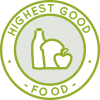 One Community is tending the human garden through Highest Good food that is more diverse, more nutritious, locally grown and sustainable, and part of our open source botanical garden model to support and share bio-diversity:
One Community is tending the human garden through Highest Good food that is more diverse, more nutritious, locally grown and sustainable, and part of our open source botanical garden model to support and share bio-diversity:
- Learn about the structures: Hoop House Hub | Aquapini & Walipini Open Source Hub
- See what we’ll be growing and tending the human garden: Gardens & Hoop Houses | Large-scale Structures | Food Forest | TA
This week, Jay Nair (BIM Designer) continued working on Aquapini and Walipini Planting and Harvesting lighting and HVAC design. He focused on integrating data from the EDGE Buildings software into the energy analysis for Walipini 1. This process began by setting up a new project in the software, inputting basic details and addressing challenges related to entering specific data due to discrepancies between the software’s options and the project’s unique specifications. The integration of lighting details, in particular, required significant time and adjustments to align with the project’s requirements. Following this, the report for Walipini 1 was updated to reflect the newly obtained energy efficiency metrics from the EDGE analysis. This included revising lighting and overall energy consumption sections, and ensuring that the data was accurately represented in the context of the project’s sustainability goals. Challenges were encountered in mapping the EDGE data to the existing report format, necessitating multiple revisions to achieve coherence and accuracy. The Highest Good Food initiative is a key component of One Community’s open source plans, dedicated to tending the human garden, and exemplifies the organization’s commitment to tending the human garden through innovative design and implementation. Below are some of the images showcasing this work.
Ziyi Chen (Landscape Designer) continued working on the design of the outdoor spaces for the Aquapini and Walipini Planting and Harvesting structures. She worked on refining the detail design for the Aquapini and Walipini outdoor spaces based on the draft plan, focusing on balancing aesthetics, functionality, and sustainability. The Fruit Tree Area included deciduous and evergreen trees, along with edible gardens and features to attract wildlife, such as birdhouses and bee hotels. The Four Seasons Area incorporated plants to reflect seasonal changes, providing visual interest and educational opportunities throughout the year. In the Hidden Treasure space, trellises and organic mulch were used to improve both the appearance and productivity of the area. The Aromatic Area, situated along a pathway, was designed with fragrant herbs like rosemary and thyme to engage the senses. The overall design focused on plant diversity, wildlife support, and creating spaces for relaxation and learning. The Highest Good Food initiative is a key component of One Community’s open source plans, dedicated to tending the human garden. See her work in the collage below.
HIGHEST GOOD EDUCATION PROGRESS
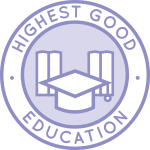 One Community is tending the human garden through Highest Good education that is for all ages, applicable in any environment, adaptable to individual needs, far exceeds traditional education standards, and more fun for both the teachers and the students. This component of One Community is about 95% complete with only the Open Source School Licensing and Ultimate Classroom construction and assembly details remaining to be finished. With over 8 years of work invested in the process, the sections below are all complete until we move onto the property and continue the development and open sourcing process with teachers and students – a development process that is built directly into the structure of the education program and everything else we’re creating too:
One Community is tending the human garden through Highest Good education that is for all ages, applicable in any environment, adaptable to individual needs, far exceeds traditional education standards, and more fun for both the teachers and the students. This component of One Community is about 95% complete with only the Open Source School Licensing and Ultimate Classroom construction and assembly details remaining to be finished. With over 8 years of work invested in the process, the sections below are all complete until we move onto the property and continue the development and open sourcing process with teachers and students – a development process that is built directly into the structure of the education program and everything else we’re creating too:
- Program Overview: Education Open Source Hub
- How the components work together in tending the human garden: How to use the Education for Life Program
- Lesson Plans for Life – Lesson Plans How-to
- Foundations of Outstanding Leaders, Teachers, and Communicators
- Curriculum for Life
- Teaching Strategies for Life
- Learning Tools and Toys for Life
- Evaluation and Evolution
This week, Brian Mwoyowatidi (Graduate Structural Engineer) continued helping with the engineering details for the Ultimate Classroom part of the Highest Good Education component. He continued his work on the Ultimate Classroom Footer, Foundation, Flooring Design Tutorial, and Engineering Report, applying several updates to the document. These included linking relevant resources within the content and updating the heading formatting to align with the standards of the One Community website for open-source publication. The One Community model of combining forward-thinking education with sustainably built classrooms like this is an excellent example of tending the human garden. See the collage below for his work.
Vimarsh Acharya (Engineering Manager and Technical Reviewer) started helping with the engineering details for the Ultimate Classroom part of the Highest Good Education component. He reviewed the ultimate classroom and Aircrete document and commented on each. The editing team has begun addressing the identified issues. Additionally, he started working on a new document related to GIS. The One Community model of combining forward-thinking education with sustainably built classrooms like this is an excellent example of tending the human garden. See the collage below for his work.
HIGHEST GOOD SOCIETY PROGRESS
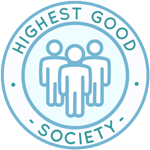 One Community is tending the human garden through a Highest Good society approach to living that is founded on fulfilled living, the study of meeting human needs, Community, and making a difference in the world:
One Community is tending the human garden through a Highest Good society approach to living that is founded on fulfilled living, the study of meeting human needs, Community, and making a difference in the world:
- Read the Highest Good society overview: Highest Good Society
- Learn about the model for fulfilled living and sharing: A Day in the Life
- Learn about the 4 economic models: RBE | For-profit | Non-profit | Entrepreneurship
- Learn about our open source community collaboration and management software: The Highest Good Network
This week, the core team completed over 64 hours managing One Community’s volunteer-work review not included above, emails, social media accounts, web development, new bug identification and bug-fix integration for the Highest Good Network software, and interviewing and getting set up new volunteer team members. They also shot and incorporated the video above that talks about tending the human garden and how tending the human garden is a foundation of the bigger picture of everything One Community is doing. The image below shows some of this work.
Feras Rehman (Data Analyst) continued working on developing One Community’s Mastodon account and strategy. He also managed his part of the One Community Updates Blog and collages, reviewing the work of Sneka, Samarth, Mrudula, Viktoriia, and Riddhisha, providing feedback on identified errors. Six toots were posted on Mastodon, each with blog links, images, and organized draft content featuring relevant hashtags. Errors noted by Sara were fixed, and seven posts were scheduled for publication on Mastodon from Tuesday, September 24 to Monday, September 30. Images for these posts were submitted to the Dropbox folder, and the posts were boosted by six different accounts on Mastodon. This work helps One Community’s mission of tending the human garden and reinforces our commitment to tending the human garden. The following images show his work for the week.
Masoom Ahmed Siddique (Senior Network engineer) focused on reviewing the migration of the Highest Good Network software from Azure to Bluehost, addressing several key challenges such as potential downtime during DNS updates, server compatibility issues, and risks related to data integrity, particularly around SSL certificate management. The preparation work involved updating DNS records and configuring Bluehost’s server to ensure performance and reliability. Additionally, Masoom explored ways to leverage Bluehost’s resources to troubleshoot performance disparities compared to Azure. Ongoing efforts included optimizing server load, improving database query speeds, and enhancing security measures. See the Highest Good Society and Highest Good Network pages for more on how this relates to tending the human garden. The collage below shows a compilation of the work from him.
Nidhi Mange (Data Analyst) worked on several tasks for One Community, including completing the onboarding process and setting up the HGN app to track volunteer hours. She managed project-related responsibilities, overseeing the review and feedback process for volunteers, which involved reviewing weekly progress summaries, ensuring the proper submission of media files, and organizing work for final review. Nidhi also handled WordPress tasks, making sure that her assigned pages adhered to the required format and layout. She used Google Docs and Dropbox for content management and coordinated with the team through comments and notifications to track task progress. See the Highest Good Society pages for more on how this relates to tending the human garden. The collage below shows a compilation of the work from her.
Praneeth Kruthiventi (Volunteer Data Analyst) continued his research and development of our Google Ads campaigns. He completed his Google Ads Search Certification and began developing a marketing strategy for One Community, creating a new campaign using Google Ads. He reviewed the training exercises of new volunteers, Nidhi, Mrinalini, and Upasana, and provided feedback. Additionally, Praneeth interviewed two candidates, Shaolei for a frontend developer role and Smitha for an admin position. He also worked on tasks related to SEO optimization. See the Highest Good Society and Highest Good Network pages for more on how this relates to tending the human garden. The collage below shows a compilation of the work from him.
Shireen Kayal (Humanitarian Program Developer & Data Manager) continued her work on a new One Community Updates Blog background video. She completed revisions based on Jae’s feedback, synchronizing the music with the footage and adding a new track. She developed a new theme utilizing the website’s dynamic book feature to present One Community’s work in more detail. She also removed stock footage to meet the video’s time constraints. See the Highest Good Society and Highest Good Network pages for more on how this relates to tending the human garden. The collage below shows a compilation of the work from her.
Shuddhendu Mishra (Software Engineer) began working on Highest Good Network schematics for Phase 1 and Phase 2, focusing on illustrating the database structures. He reviewed old PRs to gain a better understanding of the project, then went through the Phase 1 documentation to enhance his understanding of the backend. See the Highest Good Society and Highest Good Network pages for more on how this relates to tending the human garden. The collage below shows a compilation of the work from him.
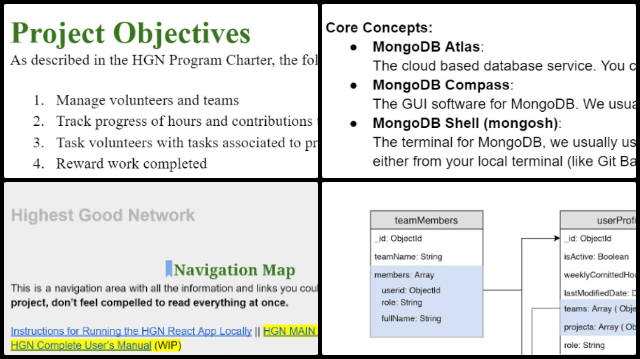
Vatsal Mendpara (Security Analyst) was working on fixing website downtime issues. He collaborated with Aravind Yuvraj and the Bluehost team to implement and update necessary services. He performed a comparative analysis of different services, assessing their effects on software efficiency and implementation timelines. Vatsal also examined system and application logs to diagnose performance issues and downtime. He focused on researching strategies and solutions to improve server efficiency, with an emphasis on cache management and resource optimization. See the Highest Good Society and Highest Good Network pages for more on how this relates to tending the human garden. The collage below shows a compilation of the work from him.
Yash Shah (Data Analyst and Team Administrator) began leading the Highest Good Network Phase 3 development with a focus on how we can manage and use data related to social and recreation participation. As part of this, he managed the summaries of Junyuan Liu and Jiaqi Wu. Yash also created and uploaded a blog post for Team Dev Dynasty, including a collage, and led a Phase 3 development meeting to review team tasks and prepare for an upcoming meeting with Jae. He also gathered data proposals for tracking trends in social architecture, with topics including “Netflix: Tracking User Preferences Based on Viewing Behavior” and “Fitness Centers: Tracking Participation and Engagement.” See the Highest Good Society and Highest Good Network pages for more on how this relates to tending the human garden. The collage below shows a compilation of the work from him.
ADMINISTRATION TEAM A-O
The Administration Team’s summary, covering their work administrating and managing most of One Community’s ongoing process for tending the human garden was managed by Muhammad Huzaifah (Administrative Assistant) and includes Durgeshwari Naikwade (Data Analyst), Hritvik Mahajan (Data Analyst), Jessica Fairbanks (Administrative Assistant), Kishan Sivakumar (Administative Assistant and Software Team Manager), Michael Juma (Administrative Assistant), Mrudula Chavali (Administrative Assistant and Data Analyst), Olawunmi “Ola” Ijisesan (Administrative and Management Support). This week, Durgeshwari worked on LinkedIn social media posts, provided feedback to new trainees to improve communication and project progress, conducted research on analytics and strategy development, and participated in two interviews for software development and administrative positions. Hritvik focused on social media post management and front-end testing, scheduling over 100 Twitter posts and preparing content and hashtags, while also testing more than ten pull requests on the development site and addressing merge issues. He contributed feedback to the admin training team’s review of documentation, contributing to the team’s efforts in tending the human garden of innovative ideas and effective communication. Jessica researched cost analysis for integrating Highest Good Food into small-scale organizations and documented her findings for Jae’s review. She also completed her weekly administrative tasks and reviewed a colleague’s work. Kishan handled senior admin duties, reviewed volunteer documents, tracked progress, addressed requests, reviewed 40 SEO pages, and started new admin tasks. He also revisited previously optimized pages based on peer feedback, emphasizing the importance of tending the human garden in all administrative processes to foster growth and collaboration. Michael prepared summaries for the Reactonauts software development team, evaluated team managers, reviewed team member performance, inspected Dropbox accounts for compliance with One Community requirements, and reviewed SEO defining avatar documents. He also checked time logs and tasks for a team member on the GIS Project. Mrudula reviewed her PR Team’s work, conducted two volunteer interviews, worked on technical review and formatting of a document, and wrote and formatted Frequently Asked Questions for the Aircrete Final Documentation. Huzaifah reviewed the work of new volunteers, managed a team, assisted with inquiries, forwarded requests to Jae, completed initial Project Manager steps, and evaluated time logs, documents, and summaries for his team. Ola reviewed the PR team’s work, organized tasks, scheduled content on Pinterest, monitored progress reports, and started creating tutorials on job descriptions and PR team processes. One Community’s model for tending the human garden includes developing and maintaining a supportive administration team like this. You can see the work for the team in the image below, showcasing our commitment to tending the human garden.
ADMINISTRATION TEAM R-Z
The Administration Team’s summary, covering their work administrating and managing most of One Community’s ongoing process for tending the human garden was managed by Sneka Vetriappan (Data Analyst) and includes Rachna Malav (Data Analyst), Rahul Bavanandan (Data Analyst), Ratna Meena Shivakumar (Data Analyst and Admin), Riddhisha Chitwadgi (Administrative Assistant), Ruiqi Liu (Administrative Assistant), Saumit Chinchkhandi (Administrative Assistant and Software Engineer), T R Samarth Urs (Data Analyst), Vibhav Chimatapu (Data Analyst/Admin Assistant), and Zuqi Li (Administrative Assistant and Economic Analyst). This week, Rachna scheduled and interviewed seven candidates, documenting her insights in the hiring team spreadsheet. She also assigned SEO pages to administrators and made progress on her own SEO tasks. Rahul balanced technical development with community engagement, advancing the HGN Phase 2 Evolution through Figma design analysis and data visualization research while actively participating in Reddit discussions. Ratna prepared the weekly summary, updated blogs for SEO, scheduled posts for Facebook and Instagram, and researched Instagram threads. Riddhisha worked on blog #600, improving SEO and providing feedback on training and housing team work, while also organizing Dropbox folders. Through these efforts, the team is truly committed to tending the human garden, nurturing both individual growth and collaborative success. Ruiqi completed the review process for the Code Crafted Team, managed blog 600, assisted with bio announcements, and worked on the DIY Earth Dam and Light Bulb Webpage projects. Saumit focused on frontend testing for multiple PRs, collaborated with volunteers and new team members, and updated his WordPress page. Sneka continued reviewing SEO pages, updated time log entries, and added summaries and collages to the webpage. Samarth managed the PR review team, provided feedback, and submitted an accepted blog post. Vibhav reviewed the PR team’s work, optimized blogs, and improved their SEO scores to 90+ through keyword and title enhancements. Zuqi organized the Graphic Design Team’s summary, provided SEO feedback, and explored Google AdWords and Analytics for marketing performance tracking. One Community’s model for tending the human garden includes developing and maintaining a supportive administration team like this. You can see the work for the team in the image below, showcasing our commitment to tending the human garden.
GRAPHIC DESIGN TEAM
The Graphic Design Team’s summary was managed by Zuqi Li (Administrative Assistant and Economic Analyst) and included Anusha Tariq (Graphic Designer), Jaime Yao (Creative Technologist), Junyuan Liu (Graphic Designer, UI/UX Designer), Jyotsna Venkatesh (Graphic Designer) and Menaka Deepak (Graphic Designer/ Art Director), covering their work on graphic designs for tending the human garden. This week, Anusha added two announcement images, both of which required edits, including one adjusted using AI generators to align with the others. She created bio and announcement images using details from the organization’s website and requested feedback and clarification on some bio text. Jaime worked on creating an announcement image and website for Yusuf and Vijay, while also developing seven social media images using MidJourney, focusing on themes like “Better World-Harmony” and “Cooperation-Belonging,” blending modern and organic visuals to reflect human-nature coexistence. Jaime also recreated images for the Highest Good Housing project, concentrating on its architectural and visual aspects. Junyuan continued work on the social media image project, gathering information and completing two images, with a third in progress. A meeting was held with Yash and Jiaqi to discuss the basics of HGN Phase 3, reviewing progress and identifying future tasks, emphasizing the importance of Tending the Human Garden in our collective efforts. Jyotsna focused on developing brand book guidelines, particularly on tone, voice, and guidelines for both digital and print. She made research on brand guidelines from other companies, though finalizing decisions proved challenging. Jyotsna also worked on aligning contributions to Vignesh’s document with the Software Team template. Menaka responded to an admin comment on a previous summary and inquired about corrections. She started creating announcement images for Angela Yun-Jung and Vishavdeep Kaur and followed a tutorial to create web content for them, tagging Sara upon completion. Menaka also created and uploaded social media images (A337, A331, A324, A317), and additional images (A314, A313, A312, A302, A300, A295), as well as more images (A288, A286, A273, A258, A233). See the Highest Good Society pages for more on how this contributes to tending the human garden. See the collage below to view some of their work.
HIGHEST GOOD NETWORK PROGRESS
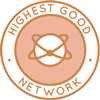 One Community is tending the human garden through open source Highest Good Network® software that is a web-based application for collaboration, time tracking, and objective data collection. The purpose of the Highest Good Network is to provide software for internal operations and external cooperation. It is being designed for global use in support of the different countries and communities replicating the One Community sustainable village models and related components.
One Community is tending the human garden through open source Highest Good Network® software that is a web-based application for collaboration, time tracking, and objective data collection. The purpose of the Highest Good Network is to provide software for internal operations and external cooperation. It is being designed for global use in support of the different countries and communities replicating the One Community sustainable village models and related components.
This week, the core team continued their work on the Highest Good Network PRs testing, confirming the fixed PRs and resolving several issues. These included resolving HEADER PAGE UI issues for 375px and up (PR #2378, PR2659), fixing Time Log component UI issues with delete and edit icons (PR2523), addressing team management page issues with editing team names (PR1087, PR2627), improving the “Add New Project” functionality and category changes (PR2561), fixing the team management page’s stuck status when changing team activity (PR2610), addressing Weekly Summary UX issues (PR2622), and making the “Tasks Contributed” section invisible if no tasks were present (PR2130, PR2588). Unresolved issues included problems with assigning or removing Add permission buttons for components (PR2512), auto-refreshing the team name after editing (PR1087, PR2627), finishing the leaderboard time-off indicator (PR2611), improving the “Tasks Contributed” section on the People Reports page (PR2651), fixing color discrepancies in the dashboard reports (PR2326), and resolving the “Create New User” permission error (PR1026). Additionally, they set up a test case with the ‘CoreTeam Tester’ account. They also recorded videos documenting issues, such as the “Add New Project” load icon inconsistency in Safari, where the project appeared in another account, but the original account screen continued to show the loading icon. We continue to focus on tending the human garden through iterative improvements and user-centric solutions. See the Highest Good Society and Highest Good Network pages for more on how this relates to tending the human garden. The collage below shows some of their work.
ALPHA SOFTWARE DEVELOPMENT TEAM
The Alpha Team’s summary, covering their work on the Highest Good Network software was managed by Lin Khant Htel (Frontend Software Developer) and includes Anand Seshadri (Software Engineer), Jordy Corporan (Software Engineer), Logeshwari Renu (Software Engineer) and Vishnu Priya Atheti (Software Developer). The Highest Good Network software is how we will manage and measure our processes for tending the human garden across our social architecture, construction, production, and maintenance processes. This week, Lin reviewed and approved PR #2697, becoming familiar with the codebase and unit testing, where all test cases passed. He also reviewed the weekly summaries, photos, and videos submitted by his Alpha team members and reached out to them regarding their tasks. Priya assigned herself a bug on Wednesday and began working through the necessary features, reviewing documentation, and studying the codebase to understand the components involved. Anand completed the final bug fixes for the Add Task Modal, resolving a hover issue and addressing merge conflicts in preparation for merging. He also finalized work on Dark Mode issues, tested the integration of these features, and reviewed PR 2869, ensuring all fixes were ready for final review. Tending the human garden, he emphasized the importance of nurturing team collaboration throughout the process. Jordy made progress on the unit tests for the emailController, completing tests for several functions, including sendEmail and updateEmailSubscriptions, and submitted a PR for review. Logeshwari completed the “Active/Inactive Toggle for Teams” task and submitted PR #2701 for review. She also tested and reviewed several other pull requests, including #PR2674, ensuring proper user permission handling; #PR2700 and #PR1111, verifying the Title Code field’s input validation; #PR2685, checking page redirection to error pages; and #PR2692, where all test cases passed. See the Highest Good Society and Highest Good Network pages for more on how this relates to tending the human garden. View some of the team’s work in the collage below.
BINARY BRIGADE SOFTWARE DEVELOPMENT TEAM
The Binary Brigade Team’s summary overseeing advancements in the Highest Good Network software was managed by Vijay Anand Pandian (Full Stack Software Engineer) and includes Aaryaneil Nimbalkar (Software Developer), Deepthi Kannan (Software Engineer), Huijie Liu (Software Engineer), Sri Sudersan Thopey Ganesh (Software Engineer), Sriram Seelamneni (Software Engineer) and Vigneshwar Muriki (Software Engineer). The Highest Good Network software is how we’ll be managing and objectively measuring our process for tending the human garden through our social architecture, construction, production, and maintenance processes.
This week, Aaryaneil reviewed code for several pull requests, including Shefali’s unit test for TeamReport selectors (#2697), the sorting feature for QSTs (#2696), Strallia’s fix for page crashes when selecting feature badges (#2695), Sriram’s addition of a button to create new projects (#2694), and Shefali’s PeopleReport selectors unit test (#2692). Additionally, unit tests were created for the `allTimeEntriesReducer.js` component, covering scenarios such as returning the initial state with no action, handling the `GET_ALL_TIME_ENTRIES` action, and maintaining the previous state for unknown actions, all while tending the human garden to ensure the team’s growth and efficiency. Work was also started on unit tests for `authReducer.js`, covering cases like returning the initial state for unknown actions, handling `SET_CURRENT_USER` with a null payload for logout scenarios, and managing `SET_HEADER_DATA`. Further unit tests were written for `allProjectsReducer`, which included cases such as handling `FETCH_PROJECTS_START`, `FETCH_PROJECTS_ERROR`, `FETCH_PROJECTS_SUCCESS`, `ADD_NEW_PROJECT`, `UPDATE_PROJECT`, `DELETE_PROJECT`, and `CLEAR_ERROR`. Tending the Human Garden was key to the collaborative effort in enhancing these features. Deepthi worked on the feedback for PR #2652, converting placeholders into labels, linking inputs with correct IDs and `htmlFor` attributes, and adjusting label styling in `Announcements.css`. She also fixed the badge assignment UI issue caused by the `Autosuggest` dropdown and created a new pull request for both fixes.
Huijie implemented a task queue with a fixed size for the tangible hours recalculation, ensuring memory conservation by removing old records. She also resolved conflicts in the pie chart pull request (#2584) and addressed bugs related to adding lost time. Sri worked on improving the semantic structure and accessibility of a component to enhance SEO performance by updating the outer container from a generic `div` to a `section` element with appropriate ARIA attributes and labels, tending the human garden of our codebase to foster a more inclusive user experience. He also adjusted the heading structure and made sure decorative elements were properly identified for screen readers, improving both the semantic clarity and accessibility of the component. Sriram finalized the requested changes for last week’s pull request on project archive functionality and started a new task to add a button for creating new projects. This involved replacing the text input area above the search bar with a button that opens a modal for inputting project details, creating a Work Breakdown Structure (WBS), and adding team members. The AddProject component was completely overhauled, and the associated tests were updated before pushing the changes to a new branch and creating a new pull request, ensuring the team is Tending the Human Garden by fostering collaboration and continuous improvement.
Vigneshwar wrote a test suite using the Jest framework to verify the functionality of the `projectReportViewData` function, ensuring its reliability while tending the human garden of project-related data. This function processes a state object containing project-related data and returns a transformed output. The test suite consisted of five cases, handling different state scenarios such as fully populated data, empty `WBSItems`, missing or undefined project data, and loading states, ensuring that the function’s output matched expectations for various configurations. Vijay worked on several tasks related to the HGN Software Development project. He addressed multiple issues in the badge assignment component and created a hotfix branch to resolve them. Vijay also worked on fixing failed test cases in the `TeamMemberTasks.test.js` and `AssignBadge.test.js` files. He reviewed several pull requests, including one that added a reset filter button for badge data filters (PR #2687), another that fixed a bug allowing unauthorized users to edit the team code input (PR #2686), a PR implementing an error page for invalid links (PR #2685), and a fix for intermittent issues with the “Assign Team” button in the User Profile (PR #2681). Additionally, Vijay worked on fixing various UI issues on the dashboard (PR #2684). See the Highest Good Society and Highest Good Network pages for more on how this relates to tending the human garden. View some of the team’s work in the collage below.
BLUE STEEL SOFTWARE DEVELOPMENT TEAM
The Blue Steel Team’s summary, presenting their work on the Highest Good Network software was managed by Jingyi Jia (Software Engineer, Team Manager), and includes Cillian Ren (Software Engineer), Ramakrishna Aruva (Software Engineer), and Vishavdeep Kaur (Full stack Developer). The Highest Good Network software is how we’ll be managing and objectively measuring our process for tending the human garden through our social architecture, construction, production, and maintenance processes. This week, Vishavdeep engaged in the review and approval process within the GitHub repository, beginning with testing two pull requests, PR-2681 and PR-2672, and providing detailed feedback through comments, approvals, screenshots, and a video. Vishavdeep also managed four additional pull requests”PR-2660, PR-2679, PR-2692, and PR-2689″each receiving comments and approvals along with the necessary screenshots. Her week concluded with reviews of PR-2686 and PR-2694, where feedback and visual proofs were again documented and shared. Meanwhile, Cillian integrated a new feature on the Teams page of the Highest Good Network application that identifies if a team member is invisible to others, enhancing user awareness and interaction within the platform. This required him to dive deep into the frontend’s structure and ensure seamless integration with the existing system, culminating in a pull request submission for review. Ramakrishna undertook a significant refactor, transforming a class component’s render method into a functional component and revising class-related syntax to use more contemporary ES6 `let` and `const` declarations for variables. In all these efforts, the team was dedicated to tending the human garden, fostering an environment that nurtures collaboration and growth. Jingyi resolved a merge conflict in PR#2611 and initiated an improvement in the project management interface by altering the postProject function. This change now ensures that the project list is immediately refreshed following the addition of new projects, eliminating the need for manual page reloads and enhancing user experience with real-time updates. See the Highest Good Society and the Highest Good Network pages to learn more on how their work contributes to tending the human garden. See below to view images of their work.
CODE CRAFTERS SOFTWARE DEVELOPMENT TEAM
The Code Crafters Team’s summary, covering their work on the Highest Good Network software, was managed by Summit Kaushal (Backend Software Developer) and includes Ambika Kabra (Software Engineer), Chetan Sunku (Software Engineer), Dhrumil Dhimantkumar Shah (Software Engineer), Niketha Anand (Software Engineer), Pavan Swaroop Lebakula (Software Engineer), Swaroop Udgaonkar (Software Engineer), and Yashwanth Pokala (Software Engineer). The Highest Good Network software is how we’ll manage and objectively measure our process for tending the human garden through our social architecture, construction, production, and maintenance processes.
This week, Summit reviewed multiple files to debug a teammate’s code, identifying issues and potential improvements. He created a mock test for streak badges to verify functionality, run tests, and debug code to support the badge test result task. Also, he tested to verify stewardship categories for 100 and 200 hours, with additional debugging efforts required. Niketha worked on fixing the column field, encountering errors during testing, with fields defaulting to “unspecified.” Efforts were made to resolve these issues and ensure proper data validation before finalizing the update, all while tending the human garden by fostering collaboration and communication among team members. Yashwanth completed work on the Update Password bug, created a pull request, and is awaiting a merge after receiving sufficient reviews. He also began addressing a more complex task involving role permissions and individual account permission changes, creating a MongoDB model for individual permission change logs. Tending the human garden, Ambika worked on the “Make editing Team name auto-refresh page” task, debugging and reviewing prior pull requests, and addressed a user profile bug with a hotfix pull request that resolved merge conflicts. She also corrected a code review comment and submitted a second commit on a frontend pull request, all while tending the human garden of collaborative efforts and team dynamics.
Dhrumil worked on several pull requests and joined the team call to get familiar with the team, reviewing the HGN Phase I Bugs and Needed Functionalities document to prepare for his development tasks. Swaroop reviewed multiple pull requests, requested changes, and began working on a claimed bug, changing two files in the codebase. He also participated in the team call as a Manager in Training for Team Code Crafters, reviewing the Software and Team Management and the Bugs and Functionalities documents. In the spirit of tending the human garden, team members focused on cultivating collaboration and growth within the project. Pavan focused on coding tasks to address bugs, including adjusting formatting in the “Edit Task” section to reduce vertical space fixing a date selector issue on Mac devices, identifying areas for change, and making necessary adjustments to the alignments. Chetan worked on two tasks. The first was a bug related to the time log for a particular task, where the logged time was not updating correctly in the dashboard. The second task involved revisiting a past bug that had previously been resolved and merged after receiving more than eight reviews. However, during the final check, one of the higher authorities could not recreate the solved bug, and upon further investigation, he also found that the previously working solution could not be recreated. See the Highest Good Society and Highest Good Network pages for more on how this relates to tending the human garden. The collage below shows some of this work.
DEV DYNASTY SOFTWARE DEVELOPMENT TEAM
The Dev Dynasty Team’s summary, covering their work on the Highest Good Network software, was managed by Harsh Bodgal (Software Engineer) and includes Ajay Kumar Reddy (Software Engineer), Crystal Low (Software Engineer), Howie Miao (Software Engineer), Jatin Agrawal (Software Engineer), Manikrishna Sanganabatla (Software Engineer), Nandini Yelmela (Software Engineer), Sailavanya Narthu (Software Engineer) and Shreya Vithala (Software Engineer). The Highest Good Network software is how we’ll manage and objectively measure our process for tending the human garden through our social architecture, construction, production, and maintenance processes. This week, Sailavanya worked on resolving a 401 unauthorized error in the HighestGoodNetworkApp project, which was caused by an API request issue that required an unavailable authentication token. Sailavanya requested team assistance to obtain the necessary credentials to address the error. Crystal focused on reviewing and testing multiple pull requests, including dropdown autocomplete suggestions and project table updates in PR 2676+1101, password changes in PR 1108, test scenario additions in PR 1096, team code display in PR 1075, time entry deletion in PR 2566, session functionality in PR 2622, and project archiving in PR 2673, with ongoing debugging for a visibility toggle issue in the Teams section. As we collaborate, we embrace the philosophy of tending the human garden, ensuring that our teamwork fosters growth and understanding. Manikrishna reviewed pull requests from OneCommunityGlobal repositories, identifying bugs and offering feedback, particularly on the Admin page and PRs such as #2691, #2688, #2689, #2642, #1108, #1101, and #1096. Howie focused on updating older pull requests, including PR 2656 for consistent column width and PR 2185, and submitted PR 2703 to address task creation link issues, tending the human garden of our collaborative efforts to ensure a flourishing project. Jatin integrated profile images from the OneCommunityGlobal site into the HGN app and resolved functionality delays. Shreya reopened a feature for adding a sort button to the Projects Page Inventory, reviewing documentation and code to ensure proper integration. Nahiyan reviewed PR 2709 to adjust task name heights on the WBS page for better readability across screen sizes and documented improvements. Harsh collaborated with a volunteer to integrate filter components into the TotalOrgSummary dashboard, resolved Git merge conflicts, and helped two volunteers set up HGNApp locally by configuring their development environments. Ajay worked on optimizing the reports page to reduce loading times and addressed a zero error issue by creating a new endpoint for user profile data, reducing load time from 5.7 to 2.7 seconds, while planning further optimization of the reports rendering process. See the Highest Good Society and Highest Good Network pages for more on how this relates to growing the tending the human garden. See the collage below for the team’s work this week.
EXPRESSERS SOFTWARE DEVELOPMENT TEAM
The Expressers Team’s summary, covering their work on the Highest Good Network software, was managed by Christy Guo (Software Engineer) and includes Faye Lyu (Software Engineer), Mohammad Abbas (Software Engineer), Reina Takahara (Software Developer), and Strallia Chao (Software Engineer). The Highest Good Network software is how we’ll manage and objectively measure our process for tending the human garden through our social architecture, construction, production, and maintenance processes. This week, Christy reviewed and validated several pull requests. She also confirmed the functionality of the active/inactive team toggle (PR#2701) and reviewed a scrollbar hotfix (PR#2704). Faye focused on merging branches, refining code consistency, and replacing the JavaScript Date object with the Moment library. Mohammad resolved timing issues related to the hour delay task and enhanced search functionality for the first name/middle name task. Reina improved the QST sorting functionality (PR#2696) and advanced her UI skills in HTML and CSS. Strallia transitioned to the Development team and completed PR reviews, including PR#2681 and PR#2651, while addressing a page crash in PR#2695. See the Highest Good Society and Highest Good Network pages for more on how this relates to tending the human garden. See the collage below to view the team’s work this week.
MOONFALL SOFTWARE DEVELOPMENT TEAM
The Moonfall Team’s summary, covering their work on the Highest Good Network software was managed by Anne Zhang (Software Engineer) and includes Lu Wang (Software Engineer), Sankara Narayanan Rajagopal (Software Engineer), Shefali Mittal (Software Engineer), Shrada Chellasami (Software Engineer), Swathi Dharma Sankaran (Software Engineer), Vedant Gandhi (Software Engineer), and Yili Sun (Software Engineer). Anne merged remaining conflicts of a PR related to UI issues on the task table and continued resolving styling issues for sub-tasks and line spacing. Shrada resolved an issue with the Member Column filter, added mouseover text for clarity, and began creating her bio. Swathi fixed a dropdown margin bug and worked on adding a button to display paused tasks at the top of the table, while preventing multiple clicks from triggering the API. This collaborative effort in resolving these issues reflects the team’s commitment to tending the human garden by creating a more user-friendly interface. Vedant resolved a previous error, created a pull request, and worked on fixing the assign team button hover issue at smaller screen resolutions. Yili fixed the “Active” column filter in the Tasks section to ensure proper display of both paused and projects that are not started, tested the solution, and submitted a pull request. See the Highest Good Society and Highest Good Network pages for more on how this relates to tending the human garden. Below is a collage for the team’s work.
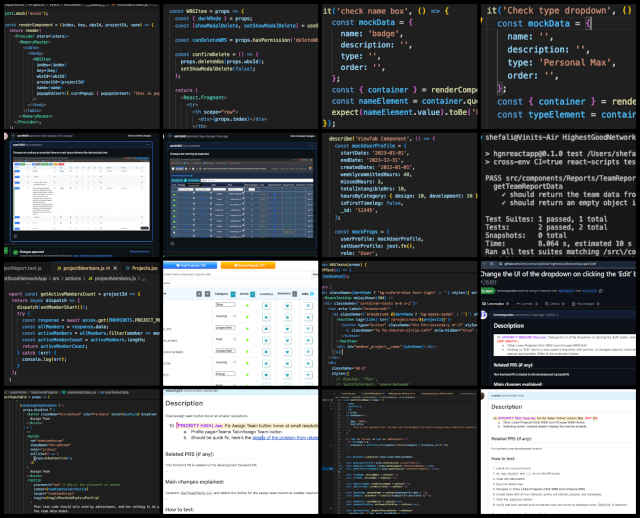
REACTONAUTS SOFTWARE DEVELOPMENT TEAM
The Reactonauts Team’s summary, covering their work on the Highest Good Network software, was managed by Changhao Li (Software Engineer). It included Aishwarya Ramesh (Software Engineer), Dhairya Mehta (Software Engineer), Haoyue Wen (Software Engineer), Gmon Kuzhiyanikkal (Software Engineer), Ishan Goel (Software Engineer), Jinxiong You (Software Developer), Nikhil Pittala (Software Engineer), Peterson Rodrigues dos Santos (Full-Stack MERN Stack Developer), Saniya Farheen (Software Engineer), Vijeth Venkatesha (Full Stack Developer), and Yash Agrawal (Software Engineer). The Highest Good Network software is how we’ll be tending the human garden across social architecture, construction, production, and maintenance processes. This week, Aishwarya completed the showtrophyicon functionality for the Weekly Summary Report Page, addressing both frontend and backend logic, but encountered issues with the correct display of the icon. Changhao focused on unit test development assisted the software development team, and compared unit test files between local and GitHub branches for `timeentry.jsx. He also hosted team meetings, created the weekly team folder for media uploads, assigned tasks to team members, and provided guidance on development questions related to weekly summaries. Dhairya optimized the “Projects find user function” by enhancing the sort and search capabilities, improving user assignment processes, all while tending the human garden to ensure effective collaboration and growth within the team.
Furthermore, Gmon fixed a bug on task dropdowns in the Projects Reports page, improved task display by adding a comma-separated view for resources, and submitted a new pull request for issue 2609, including screenshots and videos in Dropbox. Haoyue enhanced the Quick Setup Tool by increasing title character limits, adding title suggestion logic, updating button designs, and testing with 30 titles. Tending the human garden, Ishan reviewed high-priority bugs on the local system, submitted comments, and screenshots; and addressed pull request fixes using Jae’s documentation. He also researched Bugs in collaboration with the Team Leader and participated in the weekly meetings.
In addition, Jinxiong reviewed five PRs for new project creation, bug fixes, filter options, unit tests, and crash resolutions, and identified bugs within HGN Apps. Nikhil completed six PRs, including fixing the badge icon on the dashboard with front-end and back-end adjustments. Peterson optimized the “Badge Management” page by removing redundant GET requests to improve checkbox interactions. And Saniya completed training, was assigned PRs, and began working on a new bug-fix task, all while tending the human garden of collaboration and innovation within the team.
Finally, Vijeth focused on team management, CI/CD improvements, and identifying bugs across Phases 1 and 2, ensuring no duplicate reports. Yash addressed issues related to Netlify’s new URL, fixing user profile, dashboard, and leaderboard loading errors, as well as resolving a browser compatibility issue with Opera. See the Highest Good Society and Highest Good Network pages for more information on how this relates to tending the human garden. See the collage below for the team’s work this week.
SKYE SOFTWARE DEVELOPMENT TEAM
The Skye Team’s summary covering their work on the Highest Good Network software was managed by Luis Arevalo (Software Engineer), and includes, Abi Liu (Software Developer), Kyrene Flores (Software Engineer), Snehal Dilip Patare (Software Engineer),and Sai Preetham Dongari (Full Stack Developer). The Highest Good Network software manages and focuses on social architecture, construction, production, and maintenance processes, tending the human garden by fostering collaboration and sustainable solutions. This week, Abi worked on resolving a bug identified by huijie that caused the API to crash due to a null value when querying the number of deactivated volunteers, and he started investigating how to query data for the total number of weekly summaries submitted, as well as a discrepancy in the database related to this data. Additionally, he began working on a query to calculate the number of volunteers who completed their assigned hours. Kyrene updated the quick add team modal to render links from the admin links key in the user profile object and display them when a team is assigned via quick add buttons, addressing permission issues by adding checks and error messages to ensure correct form submission. Snehal reviewed bug documentation and selected the “Shengwei-Peter/Jae: fix user ID workaround bug for dashboard display” to address, but while reproducing the bug, she encountered another issue with navigating to the current profile dashboard after viewing another user’s dashboard. This issue, which she documented as a new bug, highlights the importance of tending the human garden within our software to enhance user experience, and she began working on a solution. She also switched her operating system from windows to linux due to memory issues and completed the initial HGN application setup while taking java script crash courses to improve her skills. Sai worked on creating a feature to access archived projects and implement undo/unarchive functionality by reviewing PR #2673 for archive fixes, creating a new branch, and adding a view archived projects button to the UI while ensuring consistency with existing styles and layout. He also reviewed PR #2656 and worked on tasks related to implementing the archived projects feature from the bugs file. Luis finalized the process for sending an email, followed up with Jae regarding keeping the issue warning button active after multiple warnings, and brainstormed with Kyrene on potential solutions, identifying useful functions for future implementation. Tending the human garden is essential in this context, as it underlines our commitment to nurturing our projects and team dynamics. See the Highest Good Society and Highest Good Network pages for more on how this relates to growing the tending the human garden. See the collage below for the team’s work this week.
SOFTWARE PR REVIEW TEAM A-H
The PR Review Team’s summaries for team members’ names starting with A-H and covering their work on the Highest Good Network software was managed by Vibhav Chimatapu (Data Analyst/Admin Assistant). The Highest Good Network software is a foundation of what we’ll be using to measure our results for tending the human garden. This week’s active members of this team were: Abdelmounaim Lallouache (Software Developer), Abhinav Ankur (Software Engineer), Ashay Kalpesh Mehta (Software Engineer), Ashmita Pandey (Software Engineer), Calvin Liu (Full-Stack Software Engineer), Carl Bebli (Software Engineer), Denish Kalariya (Software Engineer), and Geeta Matkar (Software Engineer). They reviewed all the Highest Good Network PRs (Pull Requests) shared in this week’s update. Learn more about how the Highest Good Network will measure and assist in tending the human garden in the Highest Good Network open source hub. The collage below shows a compilation of the work from this team.
SOFTWARE PR REVIEW TEAM I-N
The PR Review Team’s summary for team members’ names starting with I-N and covering their work on the Highest Good Network software was managed by Saumit Chinchkhandi (Administrative Assistant and Software Engineer). The Highest Good Network software is a foundation of what we’ll be using to measure our results of tending the human garden. This week’s active members of this team were: Kurtis Ivey (Software Engineer), Laura Cohen (Software Engineer), Mohan Gopi Gadde (Software Engineer), Muzammil Mohammed (Software Engineer), Nahiyan Ahmed (Full Stack Software Developer), Nathan Hoffman (Software Engineer), Navya Sri Ankireddy (Software Engineer), Nikita Kolla (Full Stack Developer), and Nishita Gudiniye (Software Engineer). They reviewed all the Highest Good Network PRs (Pull Requests) shared in this week’s update. Learn more about how the Highest Good Network will measure and assist in tending the human garden in the Highest Good Network open source hub. The collage below shows a compilation of the work from this team.
SOFTWARE PR REVIEW TEAM R-Sa
The PR Review Team’s summary for team members’ names starting with R-Sa and covering their work on the Highest Good Network software was managed by Olawunmi “Ola” Ijisesan (Administrative and Management Support) and Mrudula Chavali (Administrative Assistant and Data Analyst). The Highest Good Network software is a foundation of what we’ll be using to measure our results of tending the human garden. This week’s active members of this team were: Rishitha Mamidala (Software Developer), Rishabh Nevatia (Software Engineer), Sai Venkatesh Voruganti (Software Engineer), Shengwei Peng (Software Engineer), Saurabh Shetty (Software Engineer). They reviewed all the Highest Good Network PRs (Pull Requests) shared in this week’s update. Learn more about how the Highest Good Network will measure and assist in tending the human garden in the Highest Good Network open source hub. The collage below shows a compilation of the work from this team.
SOFTWARE PR REVIEW TEAM T-Z
The PR Review Team’s summary for team members’ names starting with T-Z and covering their work on the Highest Good Network software was managed by Olawunmi “Ola” Ijisesan (Administrative and Management Support) and Samarth Urs (Administrative Assistant and Data Analyst). The Highest Good Network software is a foundation of what we’ll be using to measure our results of tending the human garden. This week’s active members of this team were: Tharunaa Shoban Babu (Software Engineer), Neeharika Koniki (Software Engineer, Developer), Viraj Panchal (Software Engineer), Xiaolu Li (Software Engineer), Yiyun Tan (Software Engineer) and Ziyu Chu (Software Engineer). They reviewed all the Highest Good Network PRs (Pull Requests) shared in this week’s update. Learn more about how the Highest Good Network will measure and assist in tending the human garden in the Highest Good Network open source hub. The collage below shows a compilation of the work from this team.
AND WE PRODUCED THIS WEEKLY UPDATES BLOG – CLICK HERE TO SUBSCRIBE
FOLLOW ONE COMMUNITY’S PROGRESS (click icons for our pages)
INVESTOR PAGES
GET INVOLVED
DONATE | WAYS ANYONE CAN HELP | MEMBERSHIP
CLICK HERE FOR ALL PAST UPDATES
 One Community
One Community